Model for Predicting Suppliers in the Financial Sector of the Vehicle Manufacturing Company in the City of Pereira
DOI:
https://doi.org/10.22517/23447214.25692Abstract
This research work presents the development of a model using data mining techniques to identify financial variables in a manufacturing company of automotive vehicle bodies in Pereira. The study is structured into four key phases. The first phase focuses on data preprocessing, including characterization, normalization, and dimensionality reduction using PCA, Relief, and Correlation. The second phase applies unsupervised learning with K-means and Gaussian Mixture Models (GMM) to cluster and validate data based on a defined target variable. In the third phase, supervised classifiers such as Bayesian Classifier, Artificial Neural Networks, Support Vector Machines, and KNN are employed to predict supplier efficiency, optimizing investment and costing processes. Finally, the fourth phase integrates preprocessing and prediction into a practical form, using libraries such as Plotly and Dash for detailed visualizations, and tools like GitHub and Heroku for application development. This study highlights the importance of artificial intelligence in business decision-making, demonstrating how data science techniques and visualization tools can facilitate the interpretation and utilization of data analysis results.
Downloads
References
Gonzalez Disla, R. R. (2013). Big data: El cambio en los paradigmas de la información.
nks/58645e6208ae329d6203a9d5/BIG-DATA-El-Cambio-en-el-Paradigma-de-laInformacion.pdf
Sablón, B., et al. (2019). Gestión de la información y toma de decisiones en organizaciones educativas. Revista de Ciencias Sociales, XXV(2), 120–130.
Amo Cubillo, A. (n.d.). Research data management. Universidad de Valladolid. Recuperado el 25 de agosto de 2024, de http://uvadoc.uva.es/handle/10324/31269
Chien, C.-F., Chang, Y.-J., & Wang, W.-C. (2018). AI and big data analytics for wafer fab energy saving and chiller optimization to empower intelligent manufacturing. IEEE Xplore. https://ieeexplore.ieee.org/document/8374411
Ralambondrainy, H. (1995). A conceptual version of the K-means algorithm. Pattern Recognition Letters, 16(11), 1147–1157. https://doi.org/10.1016/0167-8655(95)00075-R
Liang, Y., Quan, D., Wang, F., Jia, X., Li, M., & Li, T. (2020). Financial big data analysis and early warning platform: A case study. IEEE Access, 8, 36515–36526. https://doi.org/10.1109/ACCESS.2020.2969039
Romero, A. C., Sanabria, J. S. G., & Cuervo, M. C. (n.d.). Utilidad y funcionamiento de las bases de datos NoSQL. Facultad de Ingeniería, 21(33), 21–32. Recuperado el 25 de agosto de 2024, de https://www.redalyc.org/articulo.oa?id=413940772003
Iturria Aguinaga, A. (n.d.). Reduction of false positives in online outlier detection over time series using ensemble learning. Recuperado el 25 de agosto de 2024, de https://hdl.handle.net/10481/82540
Hasan, B. M. S., & Abdulazeez, A. M. (2021). A review of principal component analysis algorithm for dimensionality reduction. Journal of Soft Computing and Data Mining, 2(1), 1–10. https://doi.org/10.30880/jscdm.2021.02.01.003
Macqueen, J. (n.d.). Some methods for classification and analysis of multivariate observations. Recuperado el 25 de agosto de 2024, de https://doi.org/
Karatzoglou, A., Meyer, D., Wien, W., & Hornik, K. (n.d.). Journal of Statistical Software: Support vector machines in R. Recuperado el 25 de agosto de 2024, de http://www.jstatsoft.org/
Rasmussen, C. E. (2004). Gaussian processes in machine learning. Lecture Notes in Computer Science, 3176, 63–71. https://doi.org/10.1007/978-3-540-28650-9_4
Castrillón, O. D., Sarache, W., & Ruiz-Herrera, S. (2020). Prediction of academic performance using artificial intelligence techniques. Formación Universitaria, 13(1), 93–102. https://doi.org/10.4067/S0718-50062020000100093 [14] Kira, K., & Rendell, L. A. (1992). A practical approach to feature selection. In Proceedings of the ninth international workshop on Machine learning (pp. 249-256). Morgan Kaufmann.
Ahmad, A., & Dey, L. (2007). A method to compute distance between two categorical values of same attribute in unsupervised learning for categorical data set. Pattern Recognition Letters, 28(1), 110–118. https://doi.org/10.1016/J.PATREC.2006.06.006
Moya, R. (n.d.). Selección del número óptimo de clusters. Recuperado el 25 de agosto de 2024, de https://jarroba.com/seleccion-del-numero-optimo-clusters/
Fin de Máster, T., Tutor, Q., Pérez, J., Cotutor, Á. A., & Bernabeu, P. (n.d.). Métodos de clasificación con Python: Aplicaciones empresariales. Universitat Politècnica de València, Escuela Politécnica Superior de Alcoy. Recuperado el 25 de agosto de 2024, de https://riunet.upv.es/handle/10251/195236
Downloads
-
Vistas(Views): 209
- PDF (Español (España)) Descargas(Downloads): 135
Published
How to Cite
Issue
Section
License
Copyright (c) 2025 Scientia et Technica

This work is licensed under a Creative Commons Attribution-NonCommercial-ShareAlike 4.0 International License.
Copyrights
The journal is free open access. The papers are published under the Creative Commons Attribution / Attribution-NonCommercial-NoDerivatives 4.0 International - CC BY-NC-ND 4.0 license. For this reason, the author or authors of a manuscript accepted for publication will yield all the economic rights to the Universidad Tecnológica of Pereira free of charge, taking into account the following:
In the event that the submitted manuscript is accepted for publication, the authors must grant permission to the journal, in unlimited time, to reproduce, to edit, distribute, exhibit and publish anywhere, either by means printed, electronic, databases, repositories, optical discs, Internet or any other required medium. In all cases, the journal preserves the obligation to respect, the moral rights of the authors, contained in article 30 of Law 23 of 1982 of the Government Colombian.
The transferors using ASSIGNMENT OF PATRIMONIAL RIGHTS letter declare that all the material that is part of the article is entirely free of copyright. Therefore, the authors are responsible for any litigation or related claim to intellectual property rights. They exonerate of all responsibility to the Universidad Tecnológica of Pereira (publishing entity) and the Scientia et Technica journal. Likewise, the authors accept that the work presented will be distributed in free open access, safeguarding copyright under the Creative Commons Attribution / Recognition-NonCommercial-NoDerivatives 4.0 International - https://creativecommons.org/licenses/by-nc-nd/4.0/deed.es license.



